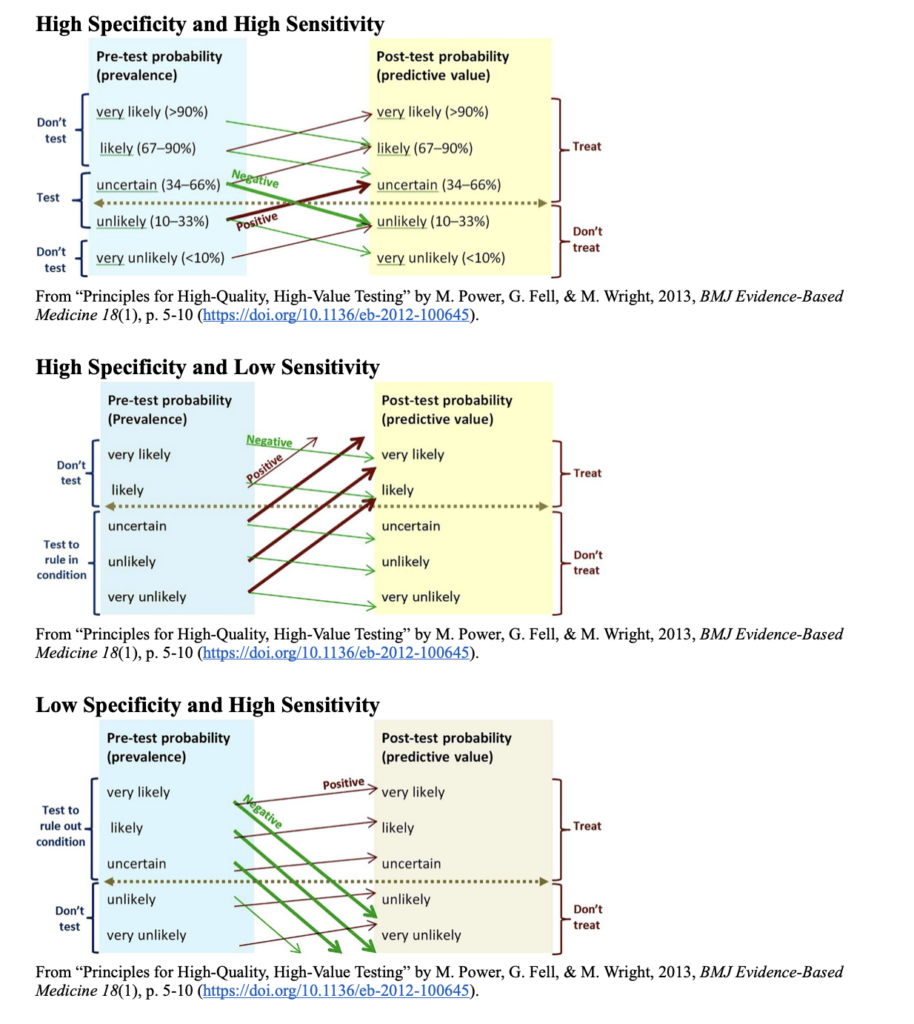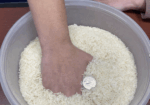Sensitivity and Specificity in Thoracic Outlet Syndrome (TOS) Tests in Hand Therapy
Filed under Treatments
By: Mikayla Murphy
Sensitivity and Specificity in Thoracic Outlet Syndrome (TOS) Tests in Hand Therapy
Thoracic outlet syndrome (TOS) describes the compression of nerves, arteries, and veins as they pass through the thoracic outlet. Compression can occur at the interscalene triangle, the costoclavicular triangle, and the subcoracoid space (Physiopedia, n.d.). There are three types of TOS – neurogenic, venous, and arterial – each based on what structure is being compressed, with neurogenic TOS being by far the most common (Jones et al., 2019). Symptoms of thoracic outlet vary based on the type but can include paresthesia in the upper extremity, weakness, changes in color, and pain (National Institute for Neurological Disorders and Stroke, n.d.). TOS can have multiple causes, including differences in anatomy, trauma, and repetitive movement (Jones et al., 2019).
Special tests can help a therapist determine if a patient has possible thoracic outlet syndrome and can inform care. When looking at special tests, it is important to consider their specificity and sensitivity. Specificity refers to a test’s ability to correctly identify someone without the disease, while sensitivity refers to a test’s ability to correctly identify someone with the disease (New York State Department of Health, 1999). Gillard et al. (2001) lists the following sensitivity and specificities for several common TOS tests:
Test Specificity Sensitivity

Power et al. (2013) offer three diagrams to assist with interpreting results of a test based on their pre-test probability, specificity, and sensitivity. Pre-test probability is a therapist’s estimate on whether or not a patient may have a condition based on the therapist’s clinical reasoning (The NNT Group, n.d.). In each of the diagrams, thicker lines mean the result is more likely to change how the condition is managed. Power et al. (2013) also suggest some pre-test probabilities should not be tested if testing will not change the way the condition is managed; however, their results are geared towards doctors whose testing may be more costly or invasive than simple provocative tests. Based on the pre-test probability, a therapist can use these diagrams to estimate the likelihood of a patient having a condition.
For example, Roos test has a low specificity and high sensitivity. If a therapist is uncertain whether a client has TOS, and the client has a positive result, it is still uncertain whether the client has TOS. However, if the client has a negative result, it is very unlikely the client has TOS. Using several tests in combination will provide more accurate results, such as Adson’s with Roos or Wright’s (Gillard et al., 2001; Power et al., 2013).
High Specificity and High Sensitivity
From “Principles for High-Quality, High-Value Testing” by M. Power, G. Fell, & M. Wright, 2013, BMJ Evidence-Based Medicine 18(1), p. 5-10 (https://doi.org/10.1136/eb-2012-100645).
High Specificity and Low Sensitivity
From “Principles for High-Quality, High-Value Testing” by M. Power, G. Fell, & M. Wright, 2013, BMJ Evidence-Based Medicine 18(1), p. 5-10 (https://doi.org/10.1136/eb-2012-100645).
Low Specificity and High Sensitivity
From “Principles for High-Quality, High-Value Testing” by M. Power, G. Fell, & M. Wright, 2013, BMJ Evidence-Based Medicine 18(1), p. 5-10 (https://doi.org/10.1136/eb-2012-100645).

References
Gillard, J., Pérez-Cousin, M., Hachulla, É., Remy, J., Hurtevent, J.F., Vinckier, L., Thévenon, A., & Duquesnoy, B. (2001). Diagnosing thoracic outlet syndrome: contribution of provocative tests, ultrasonography, electrophysiology, and helical computed tomography in 48 patients. Joint Bone Spine, 68(5), 416-424. https://doi.org/10.1016/S1297-319X(01)00298-6
Jones, M. R., Prabhakar, A., Viswanath, O., Urits, I., Green, J. B., Kendrick, J. B., Brunk, A. J., Eng, M. R., Orhurhu, V., Cornett, E. M., & Kaye, A. D. (2019). Thoracic outlet syndrome: A
comprehensive review of pathophysiology, diagnosis, and treatment. Pain and Therapy, 8(1), 5–18. https://doi.org/10.1007/s40122-019-0124-2
National Institute for Neurological Disorders and Stroke. (n.d.). Thoracic outlet syndrome. https://www.ninds.nih.gov/health-information/disorders/thoracic-outlet-syndrome
New York State Department of Health. (1999). Disease screening – Statistics teaching tools. https://www.health.ny.gov/diseases/chronic/discreen.htm
Power, M., Fell, G., & Wright, M. (2013). Principles for high-quality, high-value testing. BMJ Evidence-Based Medicine 18(1), 5-10. https://doi.org/10.1136/eb-2012-100645
Physiopedia. (n.d.). Thoracic outlet syndrome (TOS). https://www.physio-pedia.com/Thoracic_Outlet_Syndrome_(TOS)
The NNT Group. (n.d.) Diagnostics and likelihood ratios, explained. theNNT. https://thennt.com/diagnostics-and-likelihood-ratios-explained/
More To Read
Hand therapy intervention activities for Chemo-Induced Peripheral Neuropathy (CIPN)
Blog Post Written By: Rita Steffes Patients with CIPN may present with symptoms that include numbness, tingling, hypersensitivity to cold, loss of tactile or vibration sensitivity, decreased balance, and shooting burning pain in their hands These symptoms make it difficult for oncology patients to participate in all activities of daily living with dressing, meal preparation,…
Read MorePeripheral nerve injury: A hand therapist’s assessment of sensory return.
Sensory return after a hand injury specifically a peripheral nerve injury After a peripheral nerve injury, there are often times impairments in sensory function and/or motor function. The rate of recovery varies based on the degree of injury, the overall health of the patient, and the patient’s age. After an injury, it is important…
Read MoreIs HEP Just as Good as Therapy for Metacarpal Fracture Rehab?
Gülke, J., Leopold, B., Grözinger, D., Drews, B., Paschke, S., & Wachter, N. J. (2018). Postoperative treatment of metacarpal fractures – Classical physical therapy compared with a home exercise program. Journal of Hand Therapy, 31(1), 20-28. The Skinny – Medicine is moving towards a model that encourages less direct intervention and a more DIY focus…
Read MorePediatric & Adolescent Shoulder Instability
Lin, K.M, James, E.W., Spitze, E. & Fabricant, P.D. (2018). Pediatric and adolescent anterior shoulder instability: Clinical management of first-time dislocators. Current opinion in pediatrics, 30, 49-56. doi: 10.1097/MOP.0000000000000566. The Skinny: Shoulder instability for pediatric and adolescent patients is fairly common and is often complicated by a high re-dislocation rate. Shoulder instability typically occurs after…
Read MoreSign-up to Get Updates Straight to Your Inbox!
Sign up with us and we will send you regular blog posts on everything hand therapy, notices every time we upload new videos and tutorials, along with handout, protocols, and other useful information.






